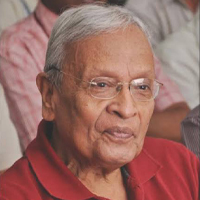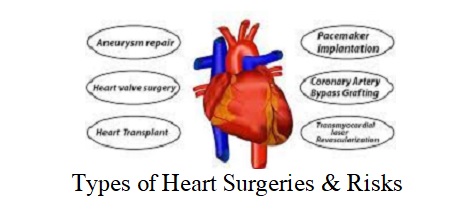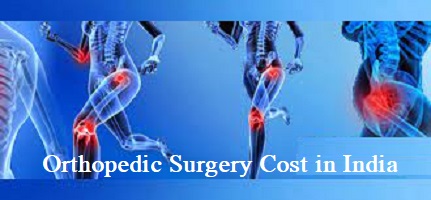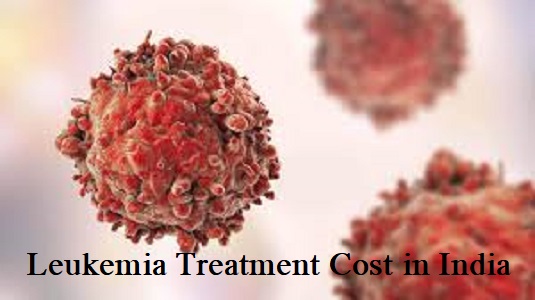Acute Lymphoblastic Leukemia (ALL) – Symptoms, Diagnosis, Treatment, Cost, and Recovery Time
Acute lymphocytic leukemia (ALL), also known as acute lymphoblastic leukemia, is a rare type of blood cancer that primarily attacks white blood cells known as lymphocytes. It is the most common cancer among children, teenagers, and young adults, particularly those aged 2 to 5.
ALL develops immature blood cells rapidly and may enter into the bloodstream. It can also spread to organs and tissues such as lymph nodes, the liver, the spleen, the central nervous system, and the testicles.
Between 2012 and 2018, the overall five-year relative survival rate for ALL was 70.8 percent. Additionally, children under the age of 15 had an excellent 92.1 percent survival rate, while those under the age of 5 had an even better rate of 93.3 percent survival. Individuals looking for medical treatment might look into acute lymphocytic leukemia treatment in India for specialized treatment and expertise in managing this condition.
Development of Acute lymphoblastic leukemia (ALL)
Acute lymphoblastic leukemia (ALL) develops by a single mutation in a bone marrow stem cell. This mutation converts stem cells into leukemic lymphoblasts, which multiply rapidly and crowd out normal blood cells. As a result, people with ALL often have lower-than-normal numbers of red blood cells, white blood cells, and platelets.
This interruption in blood cell formation causes certain medical conditions, such as:
- Anemia: Individuals with ALL might suffer from anemia, which causes tiredness and shortness of breath due to a reduction in the number of red blood cells.
- Neutropenia: Low numbers of white blood cells, particularly neutrophils, make it difficult for the immune system to protect against infections, leaving the individual exposed to several kinds of diseases.
- Thrombocytopenia: A platelet shortage can induce bleeding and easy bruising.
- Pancytopenia: Pancytopenia occurs when all three blood cell types (red cells, white cells, and platelets) are low in numbers.
Symptoms of Acute lymphoblastic leukemia (ALL)
Some common symptoms associated with acute lymphocytic leukemia (ALL):
- Bleeding and Bruising: Simple bruising, nosebleeds, and continuous bleeding from small wounds.
- Bone and Joint Pain: Pain in the bones and joints occurs due to an increase in leukemic blasts in the bone marrow.
- Recurrent Fevers/Infections: Frequent fevers and a higher risk of infections.
- Anemia: Fatigue, paleness, and shortness of breath due to low red blood cell production.
- Abdominal Pain: Discomfort in the abdomen, loss of appetite, and weight loss.
- Swollen Lymph Nodes: Enlargement of lymph nodes in the neck, underarms, groin, and chest.
- Difficulty Breathing: Breathing problems due to blockage by leukemia cells in the thymus gland.
Types of Acute lymphoblastic leukemia (ALL)
The major types of acute lymphocytic leukemia (ALL) are:
- B-Cell ALL (B-ALL): B-ALL is the most common subtype of ALL. It is caused by abnormal B-lymphocytes, a type of white blood cell responsible for producing antibodies. B-ALL affects both children and adults.
- T-Cell ALL (T-ALL): T-ALL is less common than B-ALL and is caused by abnormal T-lymphocytes. T-ALL affects teenagers and adults more than children.
- Philadelphia Chromosome-Positive (Ph+ or BCR-ABL1) ALL: This subtype of B-ALL is distinguished by a unique genetic abnormality known as the Philadelphia chromosome, which occurs from a translocation between chromosomes 9 and 22. It often requires targeted therapy with medications like imatinib.
- Philadelphia Chromosome-Negative (Ph- or BCR-ABL1 Negative) ALL: This B-ALL subtype does not have the Philadelphia chromosomal abnormalities. It may have different genetic abnormalities and require different treatment methods.
Causes of Acute lymphoblastic leukemia (ALL)
Acute lymphoblastic leukemia (ALL) is a type of cancer that develops when genetic abnormalities disturb the normal growth and development of bone marrow cells. These mutations cause bone marrow cells to grow uncontrollably, resulting in the development of abnormal white blood cells known as lymphoblasts. Because these defective cells are unable to perform their intended functions, they accumulate and crowd out healthy blood cells.
The exact causes of the DNA mutations that cause ALL remain unknown. Some cases may be connected to early genetic abnormalities, while others may be the result of hereditary disorders that increase the probability of acquiring the disease.
Inherited conditions that increase the risk of ALL include:
- Ataxia Telangiectasia
- Bloom Syndrome
- Down Syndrome
- Fanconi Anemia
- Klinefelter Syndrome
- Li-Fraumeni Syndrome
- Neurofibromatosis Type-1 (NF1)
- Wiskott-Aldrich Syndrome
In some cases, exposure to environmental factors like radiation, chemotherapy, or toxins like tobacco may give rise to ALL.
Risk factors of Acute lymphoblastic leukemia (ALL)
- Previous Cancer Treatment: Prior chemotherapy and radiation therapy for other cancers can raise the risk of developing ALL.
- Exposure to Radiation: High levels of radiation exposure, such as nuclear accidents, increase the risk of ALL.
- Genetic Disorders: Conditions like Down syndrome and others are associated with a higher risk of ALL.
- Age: Children, teenagers, and people over the age of 70 are at more risk of getting ALL.
- Sex: Males are more likely to develop ALL than females.
- Gender: Girls and people assigned female at birth (AFAB) under the age of 1 are at a higher risk than boys.
- Viral Infections: Certain viruses, like Epstein-Barr virus and human T-cell leukemia virus, can raise the risk of ALL.
Diagnosis of Acute lymphoblastic leukemia (ALL)
- Blood Tests
Complete Blood Count (CBC): This test determines the number of red blood cells, white blood cells, and platelets in a blood sample. It also measures hemoglobin levels. An increased number of white blood cells, primarily leukemia cells, is common with ALL.
- Bone Marrow Test
Bone Marrow Aspiration and Biopsy: A needle is used to obtain a small sample of bone marrow from the hipbone or breastbone during this surgery. The bone marrow sample is afterward tested in a laboratory. This is an important stage in the diagnosis of ALL because it allows doctors to look for leukemia cells in the bone marrow.
- Cell Assessment
Microscopic Examination: Hematopathologists use a microscope to study blood or bone marrow cells. They examine the size, shape, and type of cells for abnormalities.
- Immunophenotyping
Flow Cytometry: This laboratory test identifies specific surface proteins, or antigens, on cancer cells. In the case of ALL, it helps in determining the type of leukemia and its subtype.
- Genetic Tests
Cytogenetic Analysis (Karyotyping): This test examines the chromosomes within cells. It can detect abnormal chromosomal changes that may indicate cancer. The existence of the Philadelphia chromosome, for example, is associated with a subtype of ALL that requires different treatment methods.
Fluorescence in situ Hybridization (FISH): FISH is used to detect specific abnormal mutations in chromosomes and genes within leukemia cells.
Polymerase Chain Reaction (PCR): PCR is a sensitive method for detecting minor genetic mutations and chromosomal changes that would otherwise go undetected under a microscope. It’s especially important to determine minimal residual disease (MRD) after treatment.
Treatment Phases of Acute lymphoblastic leukemia (ALL)
- Induction Therapy: The main objective of this phase is to remove the majority of leukemia cells in the blood and bone marrow while restoring normal blood cell production.
- Consolidation Therapy: After remission is achieved, this phase focuses on destroying any lingering leukemia cells.
- Maintenance Therapy: To prevent leukemia cell regrowth, lower-dose treatments are administered over an extended period, often spanning years.
- Preventive Treatment to the Spinal Cord: As ALL can hide in the central nervous system, chemotherapy may be injected into the spinal fluid during each phase of therapy.
Treatment Types of Acute lymphoblastic leukemia (ALL)
- Chemotherapy: Chemotherapy is the basis of acute lymphocytic leukemia (ALL) treatment in India. It involves using powerful drugs to target and kill leukemia cells. This treatment is widely available and is given in stages to achieve remission of cancer.
- Targeted Therapy: Targeted therapy is a different method that targets specific defects within cancer cells. This technique is gaining popularity in the treatment of acute lymphoblastic leukemia in India.
- Radiation Therapy: Radiation therapy is used when leukemia expands to the central nervous system. It is an essential part of comprehensive acute lymphocytic leukemia (ALL) treatment in India.
- Bone Marrow Transplant (Stem Cell Transplant): A bone marrow transplant in India, also known as a stem cell transplant, may be considered in high-risk cases. The procedure replaces damaged marrow with healthy donor marrow.
- CAR-T Cell Therapy: CAR-T cell therapy is an innovative treatment for acute lymphocytic leukemia (ALL) treatment in India that uses the immune system to target and destroy leukemia cells.
- Clinical Trials: Clinical trials play an important role in discovering new treatments and techniques for acute lymphocytic leukemia (ALL) in India. They provide patients with access to advanced treatments while also contributing to medical progress.
Survival Rate of Acute lymphoblastic leukemia (ALL)
Acute Lymphoblastic Leukemia (ALL) survival rates differ by age group. Over 90% of children aged 0-14 were alive five years after diagnosis. The survival rate for those aged 15 to 19 was more than 70%, whereas people aged 20 and older had a survival rate of more than 30%.
Acute lymphoblastic leukemia (ALL) Treatment Cost in India
The cost of Acute Lymphocytic Leukemia (ALL) treatment in India varies depending on numerous factors. The type and location of the hospital room, the doctor’s expertise, additional medications or procedures, and continued follow-up care are all factors that influence the cost of Acute Lymphocytic Leukemia (ALL) treatment in India.
- Induction chemotherapy: Approximately $12,000.
- Consolidatory chemotherapy: In the range from $3,500 to $4,000 per month.
- Maintenance chemotherapy: In the range of $3,500 to $4,000 per month.
- Autologous Bone Marrow Transplant: Priced at $15,000.
- Full-match Allogenic Bone Marrow Transplant: Generally costs around $22,000.
Acute lymphoblastic leukemia Treatment Hospitals in India
Best acute lymphoblastic leukemia treatment hospitals in India offer comprehensive care to patients seeking the best treatments for this form of cancer. These hospitals are well-known for their skilled medical staff and cutting-edge treatments, making them an excellent choice for acute lymphoblastic leukemia treatment in India.
- Aakash Healthcare Super Specialty Hospital
- Max Super Specialist Hospital Saket
- Fortis Memorial Research Institute
- Artemis Hospital Gurgaon
- BLK Super Specialty Hospital
- Sanar International Hospital Gurugram, Delhi NCR
- Indraprastha Apollo Hospital
- Medanta – The Medicity Hospital
- Marengo Asia Hospital, Gurugram
Acute lymphoblastic leukemia Treatment Doctors in India
Top acute lymphoblastic leukemia Treatment doctors in India are highly qualified and specialized in the treatment of this form of cancer. They have vast experience with blood cancers and provide patients with tailored care. These doctors use the most modern medical treatments to achieve the best potential outcomes for acute lymphoblastic leukemia patients in India.
- Rahul Bhargava – Fortis Memorial Research Institute, Gurgaon
- Dharma Chaudhary – Sanar International Hospital, Gurgaon
- Nitin Sood – Medanta The Medicity
- Sachin Jadhav – BGS Gleneagles Global Hospital Bangalore
- Shishir Seth – Indraprastha Apollo Hospitals
- Gaurav Kharya – Indraprastha Apollo Hospitals
- Subodh Chandra Pandey – Artemis Hospital
- Rahul Naithani – Paras hospital
- Ramandeep Singh Arora – Max Super Specialty Hospital Saket
Contact Form
Attach Medical Report
Top Doctors & Surgeons in India
Why Choose Us

Personalized Care
24x7 Supports
Top NABH and JCI accredited Hospitals
Free Cost Estimation & Medical Opinion from Specialist
Get Free Tele/Video Consultation
Visa and Traveling Assistance
Post-surgery with Assistance in Follow-ups














